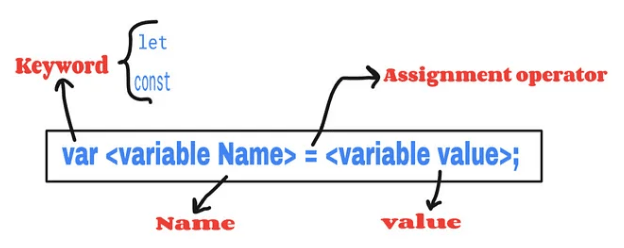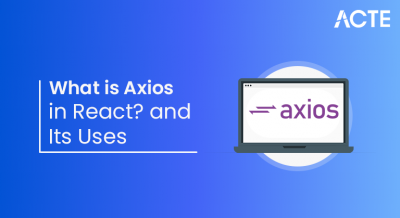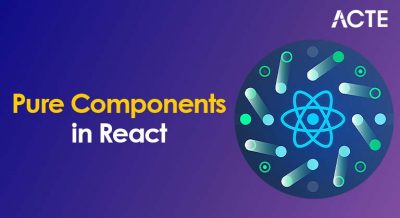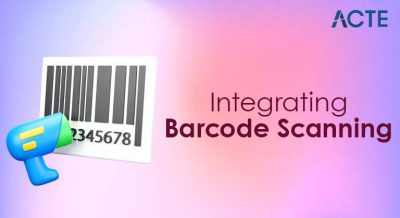
- Introduction to Interfaces
- Syntax and Declaration
- Interfaces vs Abstract Classes
- Implementing Interfaces in PHP
- Multiple Interface Implementation
- Interface Inheritance
- Interfaces and Polymorphism
- Conclusion
Introduction to Interfaces
Interfaces in PHP play a crucial role in enforcing structure and consistency within object-oriented programming. An interface defines a contract that any implementing class must follow. This means that while the interface specifies what methods a class must include, it does not dictate how those methods should be implemented. This separation of definition from implementation allows for greater flexibility and scalability in software design. Using interfaces promotes a design principle known as “coding to an interface,” which encourages developers to rely on abstract types rather than concrete implementations. This approach is particularly beneficial in large applications where different components need to work together but should remain loosely coupled, a principle emphasized in Web Designing Training. By coding against interfaces, developers can change or extend implementations without modifying the dependent code, thereby increasing maintainability and reducing the risk of introducing bugs. Interfaces also support the SOLID principles of object-oriented design, particularly the Dependency Inversion Principle and Interface Segregation Principle. They help in creating more modular systems by enabling the use of polymorphism, where multiple classes can implement the same interface and be used interchangeably. This makes it easier to write unit tests, as mock objects or stubs can be created based on interfaces. In practical use, a class in PHP implements an interface using the implements keyword. A single class can implement multiple interfaces, allowing for greater flexibility. Overall, interfaces are a powerful tool in PHP that supports clean architecture, promotes reusability, and facilitates the development of robust, scalable, and testable applications.
To Earn Your Web Developer Certification, Gain Insights From Leading Data Science Experts And Advance Your Career With ACTE’s Web Developer Courses Today!
Syntax and Declaration
In PHP, interfaces are declared using the interface keyword, followed by the interface name and a set of method signatures enclosed within curly braces. Unlike classes, interfaces cannot contain properties or implement any logic, a distinction important in the Practical Applications of Python. . They only define the method names, return types, and required parameters that implementing classes must follow. This syntax enforces a contract that ensures consistency across different class implementations.
Here is a basic example of an interface declaration in PHP:- interface LoggerInterface {
- public function log(string $message): void;
- }
In this example, any class that implements LoggerInterface must define a log method that accepts a string parameter and returns void. The class uses the implements keyword to indicate that it conforms to the interface:
- class FileLogger implements LoggerInterface {
- public function log(string $message): void {
- // Implementation details, such as writing to a file
- echo “Logging to file: $message”;
- }
- }
A class can implement multiple interfaces by separating them with commas. However, since PHP does not support multiple inheritance with classes, interfaces provide a way to achieve polymorphism and shared structure across unrelated classes.

All methods in an interface must be public, and any class implementing the interface must include all of its methods. Failing to do so results in a fatal error. This strict adherence ensures that any object of the implementing class can be safely used wherever the interface type is expected. Overall, the syntax and declaration of interfaces in PHP provide a clean and consistent way to define the structure of objects, encouraging best practices in software design and architecture.
Interfaces vs Abstract Classes
- Definition: An interface defines a contract with method signatures but no implementation, while an abstract class can provide both method declarations and some implemented methods.
- Purpose: Interfaces are mainly used to enforce a set of methods that implementing classes must have, promoting a strict contract. Abstract classes are used to share common code among related classes while still enforcing some method implementations.
- Implementation: A class can implement multiple interfaces, allowing for multiple inheritance of type, but it can extend only one abstract class due to single inheritance limitations in many languages like PHP or Java, a concept relevant when Exploring the Various Decorators in Angular.
- Method Implementation: Interfaces cannot have any method implementations (though some languages allow default methods now), while abstract classes can contain both fully implemented and abstract (unimplemented) methods.
- Properties and Fields: Abstract classes can have properties or fields with defined visibility and initial values. Interfaces typically cannot have properties or only declare constants, depending on the language.
- Use Cases: Use interfaces when you want to define capabilities or roles that multiple unrelated classes can implement. Use abstract classes when you want to create a base class with shared code and enforce a partial contract.
- Flexibility and Extensibility: Interfaces offer greater flexibility by enabling multiple inheritance of behavior contracts, while abstract classes provide a more structured and partially implemented foundation that subclasses can extend.
- Defining an Interface: An interface in PHP is defined to specify a set of method signatures that any implementing class must provide. It acts as a blueprint for classes without including any implementation details.
- Implementing an Interface: Classes implement interfaces by using the implements keyword. When a class implements an interface, it must provide concrete implementations for all the methods declared in that interface.
- Multiple Interface Implementation: PHP allows a class to implement multiple interfaces simultaneously. This enables a class to inherit multiple contracts and ensures flexibility in designing classes with diverse capabilities, a topic often discussed in Web Designing Training.
- Enforcing Consistency: Interfaces enforce a strict contract, ensuring that any class implementing an interface follows a predefined structure. This promotes consistency across different parts of the application, making code easier to understand and maintain.
- No Method Implementations in Interfaces: Interfaces cannot contain any method implementations; they only declare method signatures. This requires all implementing classes to provide their own specific implementations for each method.
- Using Interfaces for Type Hinting: Interfaces can be used to type hint function parameters or return types, allowing developers to write flexible, decoupled code that works with any class implementing the interface rather than specific implementations.
- Extending Interfaces: Interfaces can extend other interfaces, combining multiple contracts into a single interface. This allows more complex and hierarchical interface designs, enabling better modularity and code organization.
- interface LoggerInterface {
- public function log(string $message): void;
- }
- interface FileHandlerInterface {
- public function saveToFile(string $filename, string $data): void;
- }
- class FileLogger implements LoggerInterface, FileHandlerInterface {
- public function log(string $message): void {
- echo “Logging: $message”;
- }
- public function saveToFile(string $filename, string $data): void {
- file_put_contents($filename, $data);
- }
- }
- Definition of Interface Inheritance: Interface inheritance occurs when one interface extends another, inheriting all its method signatures without providing implementations.
- Purpose: It allows you to create a more specialized interface by building on existing contracts, promoting code reuse and better organization of method requirements.
- Extending Multiple Interfaces: In many languages like PHP, an interface can extend multiple interfaces simultaneously, combining their method contracts into a single interface.
- No Implementation Inherited: Though an interface inherits method signatures from parent interfaces, it does not inherit any method implementations since interfaces only declare methods, a key concept when learning Control Statements in Java.
- Implementing Inherited Interfaces: A class that implements a child interface must implement all methods declared in that interface as well as all methods from the parent interfaces it extends.
- Design Flexibility: Interface inheritance enables developers to design layered and modular APIs, making it easier to expand functionality without breaking existing contracts.
- Improved Type Safety and Polymorphism: By inheriting interfaces, developers can use more specific type hints and polymorphic behavior, allowing objects to be treated according to multiple related contracts.
Are You Interested in Learning More About Web Developer? Sign Up For Our Web Developer Courses Today!
Implementing Interfaces in PHP

Multiple Interface Implementation
PHP supports multiple interface implementations, allowing a single class to implement more than one interface. This is a powerful feature that promotes modularity, reusability, and flexibility in application design. By implementing multiple interfaces, a class can adhere to multiple contracts, enabling it to provide various types of functionality while still following a strict structure, a principle useful in understanding the Top 10 Python Libraries for Machine Learning. To implement multiple interfaces, a class simply lists them after the implements keyword, separated by commas. For example:
In this example, the FileLogger class implements both LoggerInterface and FileHandlerInterface, thereby agreeing to provide the methods defined by each interface. This design pattern allows developers to break down functionality into smaller, focused interfaces, each representing a specific capability. It also encourages adherence to the Interface Segregation Principle, one of the SOLID principles of object-oriented design, which suggests that no client should be forced to depend on methods it does not use. By implementing multiple interfaces, developers can create more flexible and testable systems. Components become easier to swap or mock, especially in large applications with evolving requirements. This practice also helps maintain cleaner code by separating concerns and avoiding monolithic class designs.
To Explore Web Developer in Depth, Check Out Our Comprehensive Web Developer Courses To Gain Insights From Our Experts!
Interface Inheritance
Interfaces and Polymorphism
Interfaces in PHP are a key enabler of polymorphism, one of the fundamental principles of object-oriented programming. Polymorphism allows objects of different classes to be treated as instances of the same interface, enabling developers to write more flexible and reusable code. When multiple classes implement the same interface, they guarantee the availability of specific methods, regardless of how those methods are implemented internally. This means the calling code can interact with any object that implements the interface without knowing the details of the class behind it. For example, consider an interface PaymentGateway with a method processPayment(). Multiple classes like PayPalGateway, StripeGateway, or BankTransferGateway can implement this interface, each with its own way of processing payments, skills that can influence the Front End Developer Salary in India. A higher-level component, such as a checkout system, can depend on the PaymentGateway interface rather than any specific payment class. This allows the system to switch between different payment providers easily, simply by passing in a different implementation of the interface. This approach supports the Dependency Inversion Principle, where high-level modules depend on abstractions rather than concrete implementations. It also promotes loose coupling, making it easier to test components in isolation and replace or upgrade parts of the system without affecting others. Polymorphism through interfaces is especially useful in large applications where systems must remain flexible and adaptable to change. It ensures consistency in how components communicate while allowing maximum freedom in how individual classes fulfill their responsibilities. This leads to cleaner, more maintainable, and scalable code.
Conclusion
Interfaces in PHP are a fundamental feature that contribute significantly to building robust, scalable, and maintainable applications. By defining method signatures without implementing them, interfaces separate the “what” from the “how” in object-oriented programming. This abstraction allows developers to design systems where components communicate through well-defined contracts, ensuring consistency across different implementations. It also promotes reusability, as multiple classes can implement the same interface while performing different behaviors internally. One of the major benefits of using interfaces is their role in enabling polymorphism. When different classes implement the same interface, they can be used interchangeably by any code that depends on that interface, a concept highlighted in Web Designing Training. This promotes flexibility and decouples the system’s architecture, making it easier to modify or extend functionality without affecting existing components. For instance, if you’re building a logging system, various logging strategies such as file logging, database logging, or cloud-based logging can all implement a shared LoggerInterface. This allows developers to swap or upgrade implementations with minimal changes to the rest of the application. Interfaces also align with solid software design principles, especially the SOLID principles. They support the Interface Segregation Principle by allowing developers to create focused, purpose-specific interfaces, and the Dependency Inversion Principle by encouraging dependency on abstractions rather than concrete classes. Whether you are implementing design patterns, structuring modular systems, or writing testable code, interfaces provide the architectural backbone. Mastering their use not only enhances code quality but also prepares you for building professional, future-ready PHP applications.





